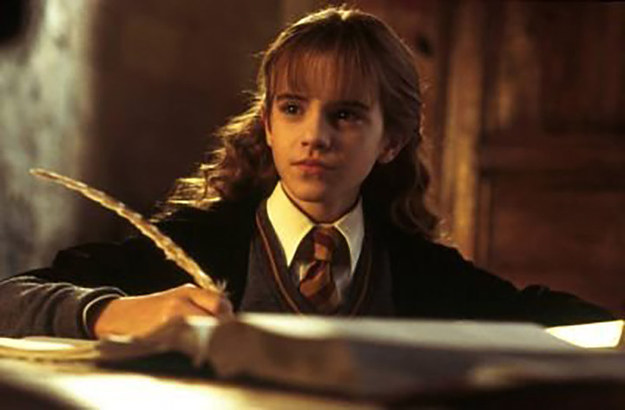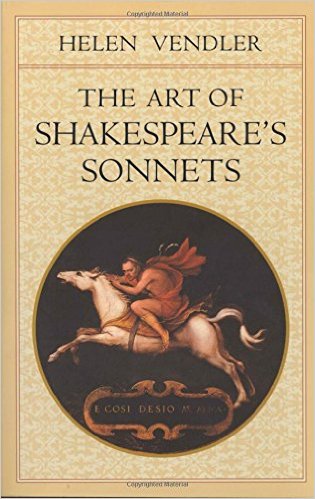PAULINA Did you make it through this passage? It is too much, it is overdone in Shakespeare’s recognizable style suggesting that it is not as it is. We cannot listen to the Nurse’s woes and wails without our minds screaming at us that we know Juliet is alive (for now). Here, we do not actually know at this point that Hermione is alive, but the language delivers the same clue. It is too bathetic to be otherwise. A comic undertone must exist to make this speech what it is – enjoyable and pleasing to the ear. This is the most troubling point of all.
A final divisive element – this one may be superficial – is the critical reception of this play. Some praise this as one of Shakespeare’s great achievements: his most inventive work, his most real, or his most mature. Others consider this a fumble: an older Shakespeare trying to play catch-up in a changing world of theatre, throwing together a flimsy tragicomedy because this is the style at the time. A sign that he needs to step aside and make room for Fletcher.The Winter’s Tale is an aesthetic play, one in which Art (in particular, the visual arts) is supreme. In the first half, Shakespeare continues the thread began in Hamlet and expanded in Othello: that is, the flaws of empiricism. We must trust our eyes to give us a sense of the world around us, but our eyes are imperfect. In The Winter’s Tale, Shakespeare shows this imperfection by presenting a world of warped reality. Archdamus, Polixenes’ man, plays with this idea in one of the first lines of the play. In response to Camillo’s announcement that Leontes will be visiting Bohemia the follow summer, Archdamus says:A playful mockery of the dull state that he sees Bohemia in, but also a great wink and nod to us (reader/audience) that we are dealing with a distortion of senses – we all are meant to take the sleepy drink while watching/reading this play. Whatever Polixenes and Hermione may be discussing is irrelevant. We are forced into Leontes’ head and must see things through his eyes – where the sight alone of the others smiling and holding hands is damning. His use of “practiced smiles” suggests that these are not humans bound by context, but actors or models, figures placed there to torment him. Reality shifts to art.At the end of this same speech, Leontes turns to Mamillius, his son. Leontes is suddenly suspicious that his son is not his. In order to reconcile this allegation, he transforms his son into a model of his past self. But he cannot maintain the image. He is interrupted by the sight of Hermione and Polixenes still holding hands. And so the play follows his mind, interrupted speeches flicking between the two “lovers” and his attempts to frame Mamillius as a younger Leontes: two works of art thrust on the stage. One we see, Hermione’s mimed (albeit innocent) flirtation: the other we do not, a younger Leontes in his proper militaristic form. What is missing from this scene (aside from Hermione’s futile pleas) is a sense of reality. What Hermione and Polixeens are discussing – whether Mamillius is indeed Leontes’ son – is as inconsequential as Bohemia having a seacoast (which, in our world, it does not). Art has reshaped reality.In the midst of Leontes’ madness, jealousy, and tyranny, we have a short scene in which two messengers return to the court from Delphi, where they consulted the Oracle about the matter. Leading up to the suspenseful trial of Hermione, the two messengers discuss the aesthetics of their travels. CLEOMENES What ought to be most striking to the messengers is the Oracle and her ruling. And yet, it is the scenery – conjured straight out of Ancient Greek texts – that appeals most. The two men have (figuratively) traveled back in time: away from the near reality of a psychologically disturbed king to the days of ancient glory when the Oracle was relevant. On their journey, there is no Leontes or Hermione – not until the return home and reality comes rushing back. When we are consumed by Art – as these men are – we have no need for reality, and can find those proverbial lounges in trees. But it is – as always – an illusion. |
I don’t know why Shakespeare placed the landlocked Bohemia on the coast in his play. Was it pure ignorance? Probably not, considering his otherwise accurate sense of geography. It was, like everything else, an aesthetic decision – an illusion to draw us away from reality. Not only is Bohemia’s geography an illusion, but the country itself. |
Everyone is someone else. Perdita – in truth a princess – is a shepherd’s daughter dressed as a queen. A fun irony I suppose. Autolycus – a low thief – is the most humble bard and beggar in the land. Florizel and Polixenes disguise themselves as ambiguous men. The sheep-shearing festival – a great pastoral feast – masks the class division that prevents Florizel from marrying Perdita. Act IV is almost wholly crammed into one scene – Iv.iv – and it is the longest scene in any Shakespeare play (beating out Hamlet II.ii by a small margin). |
There is more “action” in one of the scenes from the first half of the play than in this long scene. The scene is meant to lull us into an artistic sleep, where we indulge in Perdita’s dolling of flowers, and satyrs dancing. We drown in colours and sounds until it comes crashing down – when Polixenes reveals himself and starts handing out death sentences. The illusion collapses, and we must free ourselves from the artistic world – finding salvation back in Sicilia. But before the close: Time.
In order to bridge the division of plots, and genres, Shakespeare brings forth the figure of Time – the old winged man with the hourglass.
Time
I, that please some, try all, both joy and terror
Of good and bad, that makes and unfolds error,
Now take upon me, in the name of Time,
To use my wings. Impute it not a crime
To me or my swift passage, that I slide
O'er sixteen years and leave the growth untried
Of that wide gap, since it is in my power
To o'erthrow law and in one self-born hour
To plant and o'erwhelm custom. Let me pass
The same I am, ere ancient'st order was
Or what is now received: I witness to
The times that brought them in; so shall I do
To the freshest things now reigning and make stale
The glistering of this present, as my tale
Now seems to it. Your patience this allowing,
I turn my glass and give my scene such growing
As you had slept between: Leontes leaving,
The effects of his fond jealousies so grieving
That he shuts up himself, imagine me,
Gentle spectators, that I now may be
In fair Bohemia, and remember well,
I mentioned a son o' the king's, which Florizel
I now name to you; and with speed so pace
To speak of Perdita, now grown in grace
Equal with wondering: what of her ensues
I list not prophecy; but let Time's news
Be known when 'tis brought forth.
A shepherd's daughter,
And what to her adheres, which follows after,
Is the argument of Time. Of this allow,
If ever you have spent time worse ere now;
If never, yet that Time himself doth say
He wishes earnestly you never may.
Given the last few lines of this monologue, we get the sense that the initial audience members may have been irked by this sudden intrusion. Some critics certainly see it this way today. This is a cheap mechanism: a deus ex machina – in order to resolve the gap between two fragmented stories – a duct-taped tale.
What interests me most about the speech is the beginning. The speaker takes it upon himself in the name of Time to speed us over sixteen years. Who is the speaker? In the later plays, Shakespeare brought other deities on stage. In Cymbeline, Jupiter is Jupiter. The goddesses Iris, Ceres, and Juno in The Tempest are who they are (or are they figments created by Prospero?) So why does someone have to speak in the name of Time? Is this Time as Chorus, or Chorus as Time? The complication involved here stretches through the divide and affects both halves of the play. The struggle between Time and Chorus signifies a struggle between Time (as entity) and Art. Is the figure with the hourglass an entity or an Art? The answer must be Art.
Over the course of his works, Shakespeare has challenged most entities and transformed them with his Art. Time’s monologue here is reminiscent of such a subjugation, as found in the more famous choral monologue that opens Henry V
Here, the Chorus is pleading with us to see the Place as he sees it, in the process subjugating the great battlefield of Agincourt to the uninspiring wooden O that is the theatre. So to, does the chorus as Time plea with us to accept sixteen years condensed into his art, his monologue.
For further subjugation, we turn to Shakespeare’s greatest power – his sonnets. In Sonnet 60, Shakespeare spends three quatrains exploring the destructive power that Time has over everything – almost everything. The concluding couplet of the sonnet is: |
In Act V, everyone from both halves of the play – with the exception of the two deceased characters – finds themselves in Leontes’ court. Florizel seeks asylum: Polixenes chases his son: Leontes and Perdita reunite in an anti-climactic, off-stage moment: all rushes towards the grand finale. We learn that Paulina, following Hermione’s “death”, commissioned a statue, which everyone rushes to see.
a piece many
years in doing and now newly performed by that rare
Italian master, Julio Romano, who, had he himself
eternity and could put breath into his work, would
beguile Nature of her custom, so perfectly he is her
ape: he so near to Hermione hath done Hermione that
they say one would speak to her and stand in hope of
answer. (V.ii)
This little passage created one of the most prominent micro-criticisms in Shakespeare. The fact that Romano created the sculpture is of no consequence to the play itself, and yet, this tidbit stands out for this is the only instance where Shakespeare directly references a near contemporary artist. Julio (or Guilio) Romano (1499~1546) was a painter, not a sculptor, but many critics have resolved this discrepancy. Shakespeare would not have seen his works directly, but he became a major influence in European art so Shakespeare would have been familiar with the works. |
So why Romano, in my opinion?
Shakespeare could have left it at a “rare Italian master” and the play would be unchanged. After all, Romano never sculpted Hermione, or anything like her. Furthermore, the sculpture is an illusion (most likely, although some debate it). What Paulina presents as a sculpture is really Hermione, who has been hidden away for sixteen years. Yet, Art has such a strong presence and does everything in its power to encroach upon reality, that even the illusion of a sculpture must be given a name. We are more apt to believe such a sculpture could exist if done by a renowned artist as opposed to a hypothetical one. Let’s call this Art’s first thrust.
We may call this a critical hit. For all its struggles, all its submissions, Time leaves its imprints on Art. Illusions can create wonders, but Time will have its due. Families can be happily reunited – but sixteen years passed regardless. Hermione lost sixteen years of life, and returns from the grave wrinkled. Never mind that Mamillius had no protection. He remains dead. Art tries to regain its footing. Paulina brushes off Leontes’ concerns saying:
So much the more our carver's excellence;
Which lets go by some sixteen years and makes her
As she lived now. (V.iii)
It was Romano’s intent to make her not as she was, but as she is now. In this, Romano (Art) regains control of Time. Paulina then proceeds with a grand ceremony that “brings the statue to life.” Hermione reunites with her daughter, and noticeably says nothing to Leontes. We are left with one of the more inconclusive endings in Shakespeare: Time has been beaten down, but not defeated.
And so Art...
0 Comments











 RSS Feed
RSS Feed